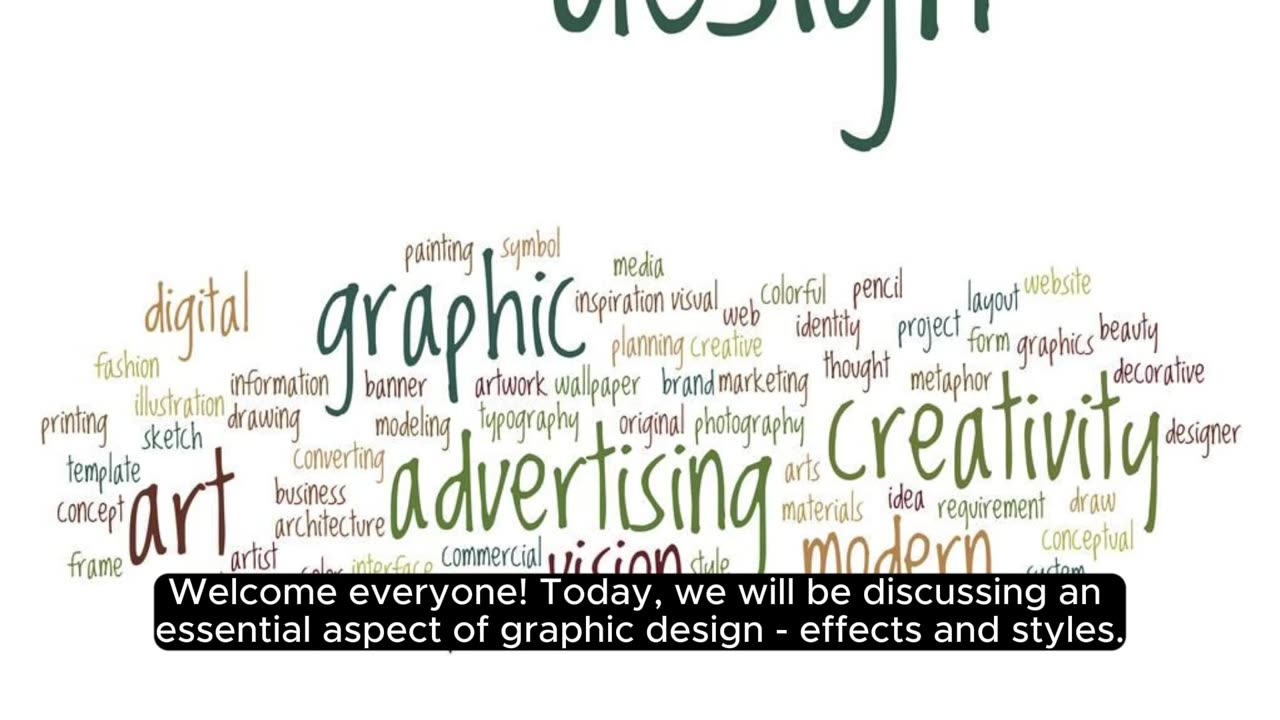Premium Only Content

Effects and Styles_ Adding Dimension and Style
"Effects and Styles: Adding Dimension and Style"
In the realm of design and visual aesthetics, the strategic use of effects and styles is a transformative approach to enhance the overall appeal and impact of creative works. This involves the intentional incorporation of visual elements that add depth, dimension, and a distinct style to the design. Whether it's for graphic design, illustrations, or multimedia presentations, mastering the art of effects and styles elevates the visual experience.
**Creating Dimension:**
Effects such as shadows, highlights, and gradients are instrumental in adding depth and dimension to visual compositions. Shadows cast by elements create a sense of realism and depth, while highlights bring attention to focal points. Gradients, the smooth transitions between colors, contribute to a three-dimensional effect, making designs more dynamic and visually engaging.
**Textural Elements:**
Integrating textures into designs adds a tactile quality, creating visual interest and uniqueness. Textures can range from subtle patterns to more pronounced surfaces, providing a layer of complexity that captivates the viewer. Whether applied to backgrounds or individual elements, textures enhance the overall aesthetic and contribute to a richer visual experience.
**Typography Styles:**
The choice of typography plays a pivotal role in defining the style of a design. Experimenting with various font styles, sizes, and arrangements can convey different moods and themes. Bold, sleek fonts may communicate a modern and sophisticated look, while handwritten or script fonts can evoke a sense of warmth and personalization.
**Color Grading and Filters:**
Color grading and the application of filters are powerful tools to establish a specific atmosphere or mood. Adjusting color tones, saturation, and contrast can completely transform the visual impact of an image or design. Filters, reminiscent of vintage or modern photographic styles, offer a quick way to infuse character and style into visuals.
**Layering and Opacity:**
Layering elements and adjusting opacity levels create a sense of depth and transparency within a design. This technique allows for the juxtaposition of multiple elements, each contributing to the overall visual narrative. Layer effects can range from subtle overlays to more pronounced visual interplay.
**Consistent Branding Styles:**
For brand identity and marketing materials, maintaining consistent styles across various platforms is essential. This includes the use of specific colors, fonts, and visual effects that align with the brand's personality. Consistency fosters brand recognition and reinforces a cohesive visual identity.
**Dynamic Motion Effects:**
In multimedia presentations or web design, incorporating dynamic motion effects can capture attention and guide the viewer's focus. Animated transitions, parallax scrolling, or subtle hover effects infuse a sense of movement, making the design more interactive and engaging.
In essence, the artful application of effects and styles is a nuanced process that requires a keen understanding of design principles and the intended message. By leveraging these elements thoughtfully, designers can breathe life into their creations, making them visually compelling, memorable, and aligned with the desired aesthetic. Whether aiming for a sleek modern look, a nostalgic vintage feel, or a vibrant contemporary style, effects and styles serve as the brushstrokes that define the visual narrative.
-
 8:41
8:41
Zoufry
1 day agoInside The Cartels Training Camps for Assassins
4211 -
 12:37
12:37
itsSeanDaniel
1 day agoFake Republican REFUSES to Stand Up for Charlie Kirk
1.3K14 -
 1:01:55
1:01:55
MTNTOUGH Podcast w/ Dustin Diefenderfer
20 hours agoJason Khalipa: American Men: Get Off the Couch and Rise Up Now | MTNPOD #133
14.6K36 -
 5:17
5:17
Blackstone Griddles
11 hours agoEasy Weeknight Meals: Creamy Parmesan Beef Pasta
3.02K2 -
 7:08
7:08
Rena Malik, M.D.
21 hours ago $0.49 earnedFour totally surprising causes of Back Pain
4.28K1 -
 6:27
6:27
DropItLikeItsScott
13 hours ago $0.27 earnedIs This the Coolest Gun Accessory Ever? The Gun Guardian
3.2K -
 19:05
19:05
Michael Feyrer Jr
22 hours agoCan you even fit this much FAIL in one video? $10K Challenge Week 1
3.9K -
 19:53
19:53
Professor Nez
16 hours agoYou WON’T BELIEVE What I Found on Charlie Kirk’s Shooter!
5.54K21 -
 1:35:53
1:35:53
The China Show
17 hours ago $0.97 earnedBrutal Mayhem in China as Dark Coverups are Exposed - #280
12.6K5 -
 12:30:34
12:30:34
Times Now World
23 hours agoLIVE | Russia-Belarus Zapad-2025 LIVE | Missiles Target NATO in Arctic & Baltic
25.1K1